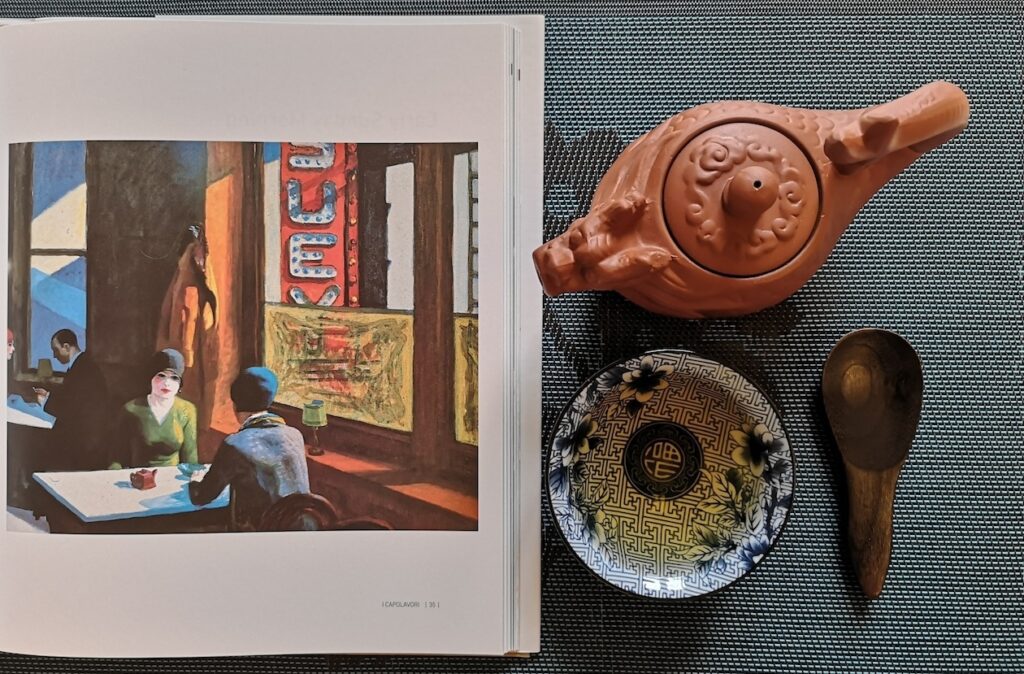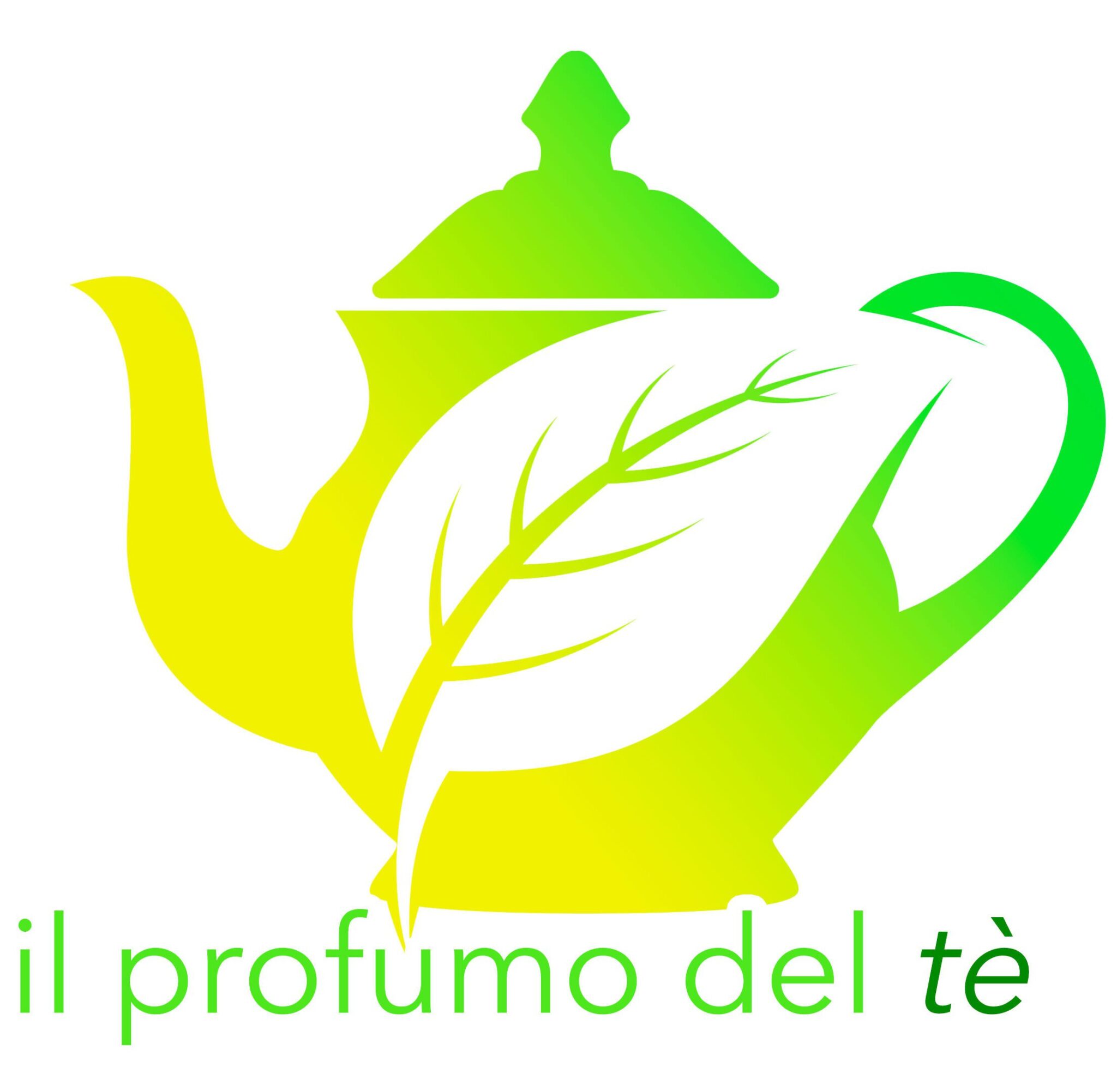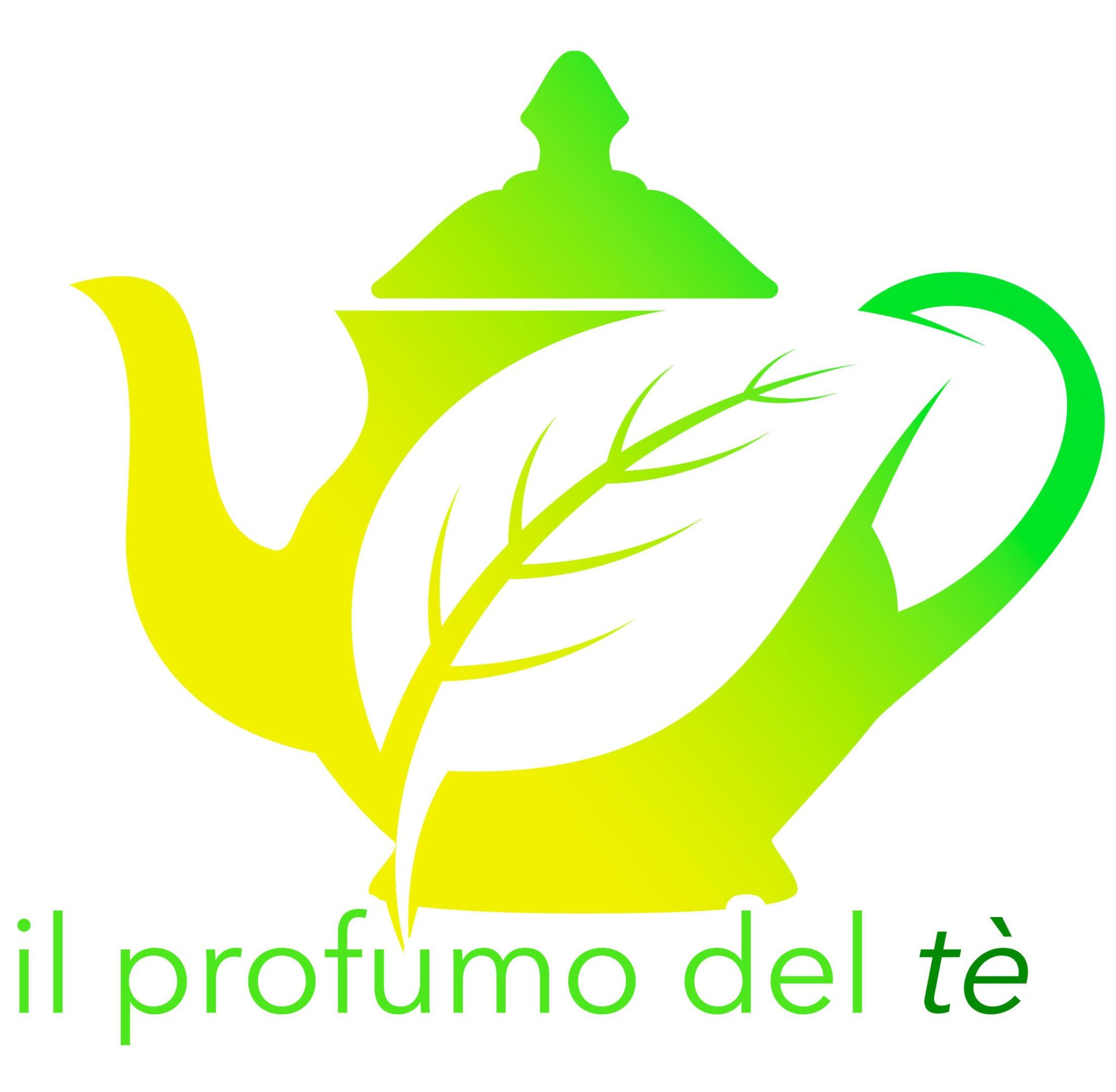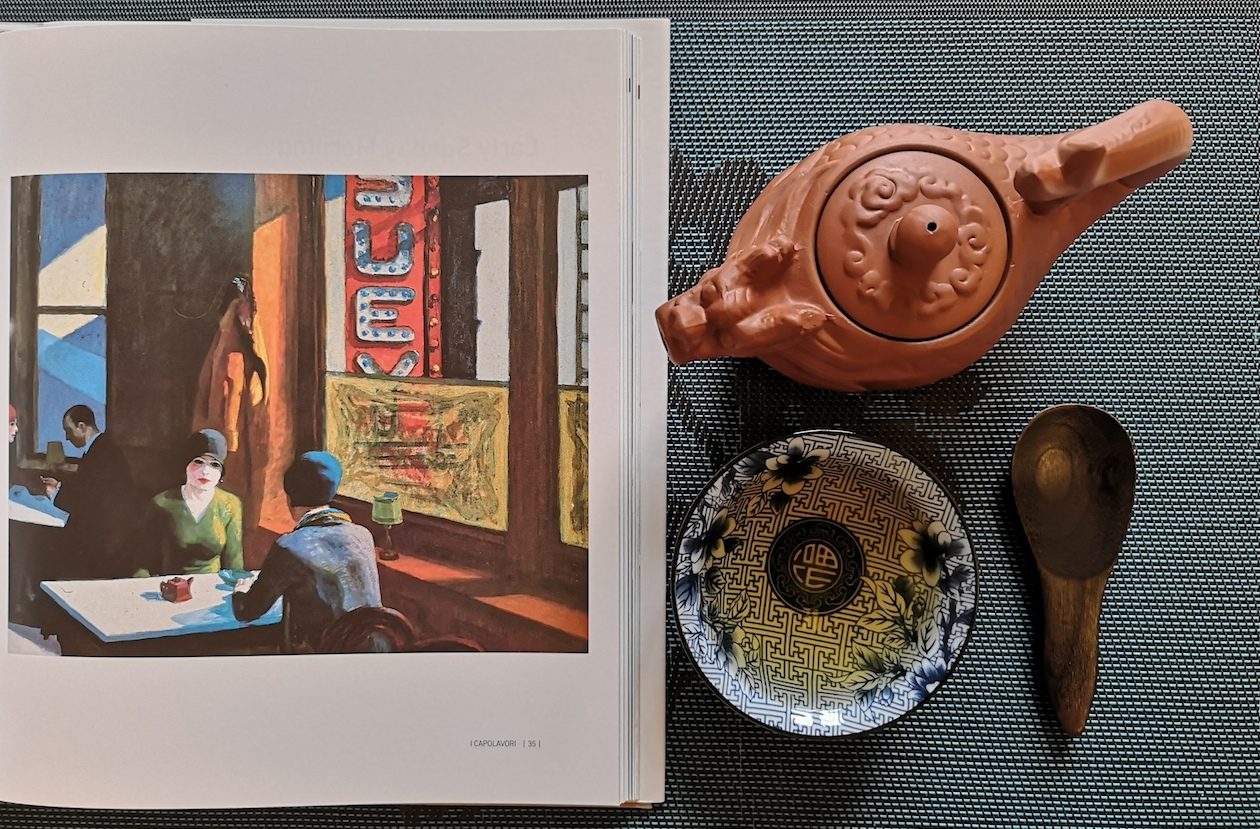Sono una grande amante dell’arte e per me è un vero piacere passeggiare per musei e mostre e ammirare in quali opere il tè può essere presente.
In Edward Hopper (1882-1967) lo ritroviamo in Chop Suey del 1929 un olio su tela di cm 81 x 97 che si trova a Saint Louis nella Collezione di Mr and Mrs Barney A. Ebsworth.
Il dipinto rappresenta due donne sedute a un ristorante cinese dove sul tavolo vediamo una teiera in terracotta Yixing con una ciotola blu.
Entrambi i soggetti sono vestiti in modo molto simile e il loro incarnato ricorda quello di rigidi manichini. La donna sembra specchiarsi nel suo doppio anche se lo sguardo è lontano.
Allo stesso modo, nello stesso ristorante sullo sfondo, troviamo un uomo e una donna ognuno immersi nei loro pensieri.
Hopper aveva la capacità di trasmettere attraverso le sue opere e il forte contrasto di luci ed ombre, un forte senso di solitudine, assenza e abbandono dove i soggetti non riescono a comunicare.
Si dice che il tè dissipi la tristezza e che sia un atto di grande amore verso noi stessi per allontanare quel senso di vuoto e che se praticato ogni giorno come un rito doni una nuova presenza.
Non mi stupisce che anche oggi questa tematica sia così attuale. Non è difficile mettersi ad osservare coppie o persone ad un tavolo immersi nei loro pensieri o sul telefono perdendo così di vista l’importanza dell’ascolto verso l’altro nel piacere di una reciproca condivisione.
Grazie alla meditazione del tè è possibile ascoltare quel vuoto interiore ed esaminare ogni nostra singola emozione e guarire, per tornare coi giusti tempi a gioire della vita e ad essere pronti a qualcosa di nuovo.
Che tipologia di tè avrebbero potuto bere in questo ristorante cinese ritratto da Hopper? Dalla teiera direi proprio un Puerh.
Hopper Sadness and Tea

I am a great lover of art and for me it is a real pleasure to walk through museums and exhibitions and admire in which works tea can be present.
In Edward Hopper (1882-1967) we find it in Chop Suey of 1929 an oil on canvas of 81 x 97 cm which is in Saint Louis in the collection of Mr and Mrs Barney A. Ebsworth.
The painting represents two women sitting at the table of a Chinese restaurant where on the table we see a Yixing terracotta teapot with a blue bowl.
Both subjects are dressed very similarly and their complexion resembles that of rigid mannequins. The woman seems to be mirrored in her double even if her gaze is far away.
Similarly in the same restaurant in the background we find a man and a woman each immersed in their thoughts.
Hopper had the ability to convey through his works and the strong contrast of light and shadow, a strong sense of loneliness, absence and abandonment where the subjects are unable to communicate.
Yes, it is said that tea dispels sadness and that it is an act of great love for ourselves to remove that sense of emptiness and that if practiced every day as a ritual it gives a new presence.
I am not surprised that even today this issue is so present. It is not difficult to observe couples or people at a table immersed in their thoughts or on the telephone, thus losing sight of the importance of listening and being present towards the other in the pleasure of mutual sharing.
Thanks to tea meditation it is possible to listen to that inner emptiness and examine every single emotion of ours and heal, to return at the right times to enjoy life and be ready for something new.
What kind of tea could they have had in this Chinese restaurant that Hopper portrayed? From the teapot I would say a Puerh.

La teiera Yixing in argilla è ben visibile sul tavolo del ristorante cinese, teiere pregiate che vengono utilizzate da secoli – Photo@Veru



No responses yet